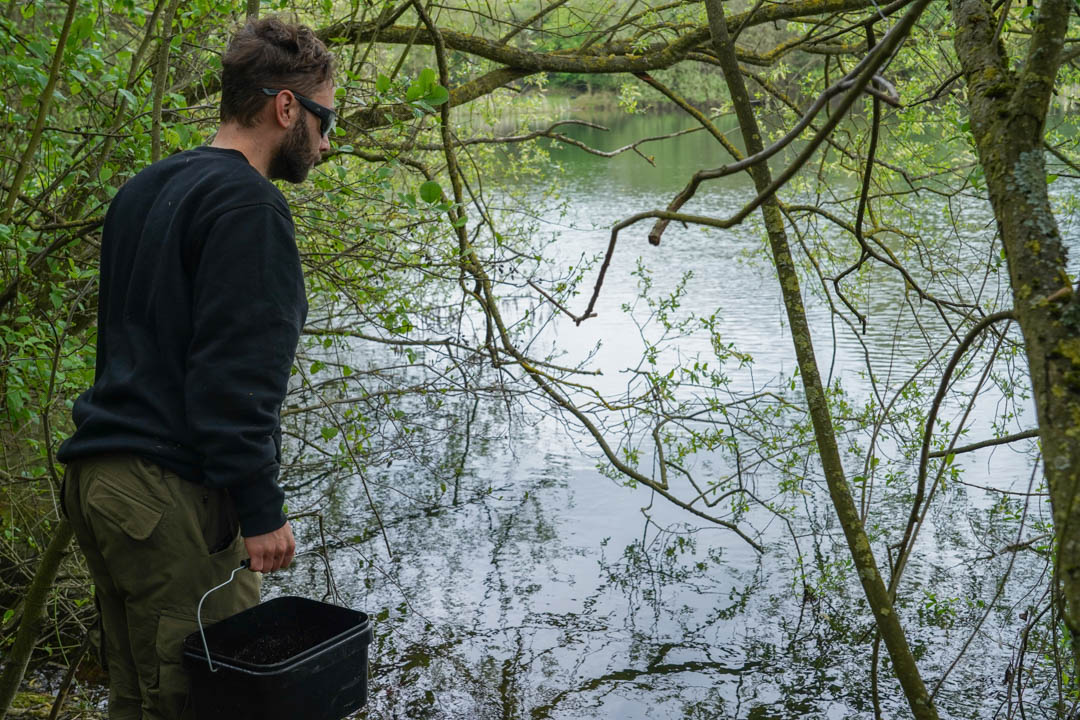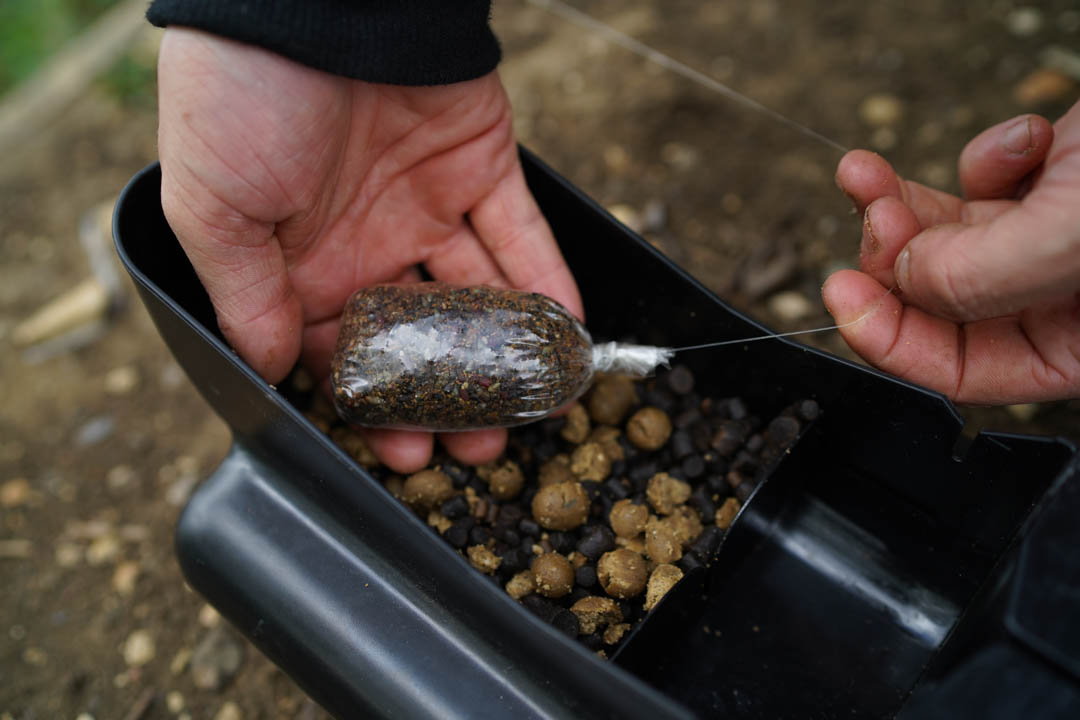Swinging into Summer
The shift between spring and summer has to be one of my favourite periods in the carp fishing calendar; the days are now longer, brighter, warmer and the enjoyment of sitting out and watching the fish move about throughout the day while taking in and appreciating the sights angling has to offer can be fully enjoyed. I would also say it is the period in which a lot of fish get caught on the lead up to or after spawning, with fish weights varying greatly and weather conditions determining when this phenomenon takes place.
In this technical feature, I take a closer look at one of my favourite tactics during this period, and that is catching carp at close quarters. When I say close quarters, I mean either directly in the margins, on shallow bars or in areas where they frequent regularly during this period such as bays and areas with dense foliage such as snags, lilies etc. Throughout this article, I will focus on the methods I like to adopt and some tips on finding those productive areas of the lake.
Preparing Areas
My first tip and one that is more effective on quieter lakes is preparation of different areas to fish. By this, I mean, using your eyes and walking around the lake, trying to spot any fish in close and locating some fishable spots in the edge or close to the bank. An important tool for this is having a good pair of polarising glasses, this will allow you to see directly through to the lakebed even on the brightest of days. The type of spots I am looking for area generally small cleaned off spots, not necessarily anything too large in size, but a gravelly spot around the size of a bin lid is usually perfect to present a rig and some additional free offerings.

Upon arriving at the lake usually shortly after first light, I will first of all walk the lake with simply a bucket of bait, catapult and sunglasses. As I work my way around the lake, I will check in all fishable areas of snags, shallows, to one pinpoint any fish present and two, begin to introduce a few handfuls if bait to come back to later in the day. Even if it takes a good hour to walk the lake and bait a few spots, this is time well taken and will often reward you later in the day, giving you multiple options to explore.
Staying Mobile
Staying mobile goes hand in hand with my first tip of preparing areas. To achieve the best results by doing this, you also need to stay on your toes with your gear. Travelling as light as possible, whether you are doing a day session or an overnight trip, the more gear you carry, the harder it will be and the more effort it will require to move round the lake.

I have always been a big believer in carrying the essential items for all of my trips, stripping back on the amount of gear I carry and the quantity of bait for each trip. Any spares or extra bait, I simply leave in the van if I do need them during the trip.
Fresh New Winds
If you can coincide your trips with new winds, this will often provide an opportunity to capitalise on moving fish and get in and bait spots before they turn up. You will often find at lakes that once anglers are set- up, they will become reluctant to move, which allows you to take advantage of turning up on a new wind and being the first angler to make the most of the situation. I will regularly monitor my forecast and look out for any sudden changes in both temperature, pressure, and wind direction.

Using Google Maps
Lots of angler talk about google maps, but it is without doubt on of the best tools for getting an alternative view of the lake without using a drone. I mainly use it for understanding where the shallower areas of the lake are; these are often visible on the aerial images and give you a good idea of where those carp may start to migrate to when the water becomes warmer.
When I think about short session stalking and catching them close, in my head I start with a little plan; it is all about checking areas and then assessing as you go. If I can draw a line under areas of the lake and basically write them off with having no fish present, then I am instantly narrowing down the options to give a go! This method is excellent for all sizes of lake and helps you when deciding on where to fish; the key to making it work is checking, watching areas and then making a decision based on what you see.
Grubbing Mix
When I use the phrase ‘grubbing mix’ what I am referring to is a mix that creates attraction and a longer feeding response by introducing lots of small, highly attractive bait items accurately on a small spot. Small items of food keep the fish feeding for longer and therefore on the spot for some time, more so than just introducing whole boilies and larger pellets. I also find this type of mix more effective as we move out of spring and into summer, with it being less blatant and more suited to in the edge fishing.

The small bait items in this include are chopped boilies, hempseed and frozen water snails. All of these small items are brilliant at getting the fish grubbing about close to the lakebed and building their confidence. Throw into the mix some chopped boilie and those slightly larger bait items make getting a bite using conventional baits much easier!


On those days where I struggle to find fish close into the edge, but I still feel there are bites to be had by fish visiting snags and bays, I will simply introduce light scatterings of bait using the catapult and later visit these spots to see if there any signs of feeding activity, such as bubbling or fish showing.
Visual Tools
Your eyes are your biggest weapon when it comes to fishing, tracking those carp down at times can be tricky, but there is no substitute to looking and watching the water. Firstly, a good pair of polaroid’s goes without question. Secondly, I will carry my binoculars; these are more suited to watching spots out in the pond or areas close to snags/ marginal reeds etc to spot any signs of bubbling or coloured water.

If safe to do so, getting a vantage point on a lake by climbing trees and looking from banks with higher ground can often give you a good angler to view and reveal any fish that are just under the surface.

The Stealthy Approach
This is an aspect that a lot of anglers are simply not good at and there is nothing worse than spending hours preparing spots, to then go and ruin your chances by making unnecessary noises. I generally use solid PVA bags for my edge fishing and if you’ve ever cast a solid out into the pond, you’ll know the type of disturbance they create! But, when lowering in off the rod tip or using a baiting pole to position onto a spot, they offer virtually no disturbance, but give you peace of mind that your hook and hookbait are protected from any potential debris!

The Solid PVA Bag
There is no doubting the effectiveness of the solid PVA bag, but certainly when it comes to fishing at close quarters, I feel it has a few distinctive positives over other conventional rigs. Firstly, it leaves a super attractive pile of bait directly around your hookbait; this means that when lowering this rig into the edge, there is no need for additional loose feed to be introduced, especially if you have already primed the spot earlier in the day.

Secondly, it ensures that if there is any debris on the lakebed, the rig will be protected and fishing effectively. At times, those close in spots can become a little cloudy, certainly when there have been fish feeding on them, so the bag ensures that you can sit back confident you are effectively presented!
Finally, and you will know this if you have done any previous edge fishing, that the carp at times can feed a great deal more finicky than out in the pond. As a result, I believe having that short hooklink inside the bag serves to provide optimum hooking potential when those carp drop their guard and have a feed. That short link with a nicely balanced bait quickly flies back into the mouth of the carp, hooking them quickly and efficiently!
Being Adaptable
Although I will always look to prime spots in the edge, I certainly do not go unequipped to fish on the surface, as many times, an opportunity may arise whereby the fish are feeding close to the surface. By carrying one rod and enough gear to adapt quickly, I can switch from a margin baited rig to a surface set- up quickly, having rigs all tied and ready to go prior to my session. Being prepared allows me to switch at the drop of a hat and, by carrying a spomb rod too, I can quickly apply floaters into the swim with little hassle.

These are a few key aspects I believe will help you catch more carp as we move into summer; utilising these methods will allow you to adapt and stay active, fishing for opportunities when they arise and hopefully land you a few extra fish along the way!



